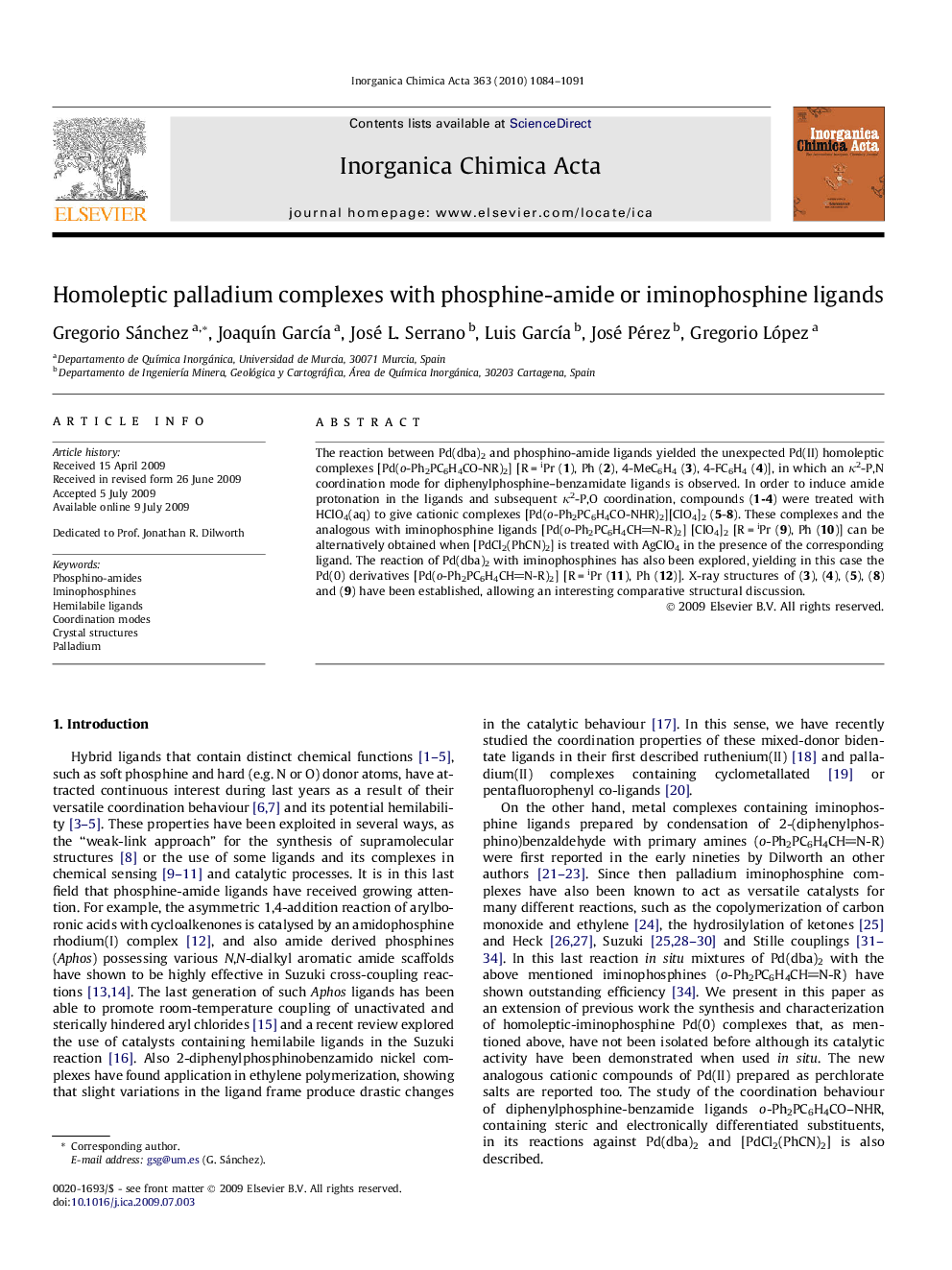| کد مقاله | کد نشریه | سال انتشار | مقاله انگلیسی | نسخه تمام متن |
|---|---|---|---|---|
| 1312599 | 975472 | 2010 | 8 صفحه PDF | دانلود رایگان |

The reaction between Pd(dba)2 and phosphino-amide ligands yielded the unexpected Pd(II) homoleptic complexes [Pd(o-Ph2PC6H4CO-NR)2] [R = iPr (1), Ph (2), 4-MeC6H4 (3), 4-FC6H4 (4)], in which an κ2-P,N coordination mode for diphenylphosphine–benzamidate ligands is observed. In order to induce amide protonation in the ligands and subsequent κ2-P,O coordination, compounds (1-4) were treated with HClO4(aq) to give cationic complexes [Pd(o-Ph2PC6H4CO-NHR)2][ClO4]2 (5-8). These complexes and the analogous with iminophosphine ligands [Pd(o-Ph2PC6H4CHN-R)2] [ClO4]2 [R = iPr (9), Ph (10)] can be alternatively obtained when [PdCl2(PhCN)2] is treated with AgClO4 in the presence of the corresponding ligand. The reaction of Pd(dba)2 with iminophosphines has also been explored, yielding in this case the Pd(0) derivatives [Pd(o-Ph2PC6H4CHN-R)2] [R = iPr (11), Ph (12)]. X-ray structures of (3), (4), (5), (8) and (9) have been established, allowing an interesting comparative structural discussion.
The reaction between Pd(dba)2 and phosphino-amide ligands yielded the unexpected Pd(II) homoleptic complexes [Pd(o-Ph2PC6H4CO-NR)2] [R = iPr (1), Ph (2), 4-MeC6H4 (3), 4-FC6H4 (4)], in which an κ2-P,N coordination mode for diphenylphosphine–benzamidate ligands is observed. In order to induce amide protonation in the ligands and subsequent κ2-P,O coordination, compounds (1–4) were treated with HClO4(aq) to give cationic complexes [Pd(o-Ph2PC6H4CO-NHR)2][ClO4]2 (5-8). These complexes and the analogous with iminophosphine ligands [Pd(o-Ph2PC6H4CHN-R)2] [ClO4]2 [R = iPr (9), Ph (10)] can be obtained when [PdCl2(PhCN)2] is treated with AgClO4 in the presence of the corresponding ligand. We have also explored the reaction of Pd(dba)2 with iminophosphines that in this case produced the Pd(0) derivatives [Pd(o-Ph2PC6H4CHN-R)2] [R = iPr (11), Ph (12)]. X-ray structures of (3), (4), (5), (8) and (9) have been established, allowing an interesting comparative structural discussion.Figure optionsDownload as PowerPoint slide
Journal: Inorganica Chimica Acta - Volume 363, Issue 6, 5 April 2010, Pages 1084–1091